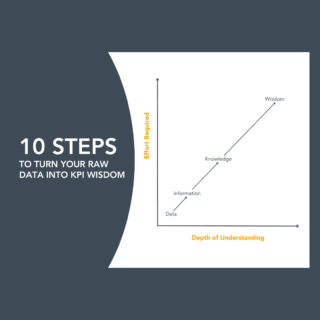Eventually any strategy formulation conversation leads to this question: How do we now align our internal resources and capabilities to achieve these longer-term results?
These conversations can feel hard at the best of times because they force leaders to discuss change and improvement; yet it usually feels somewhat easier with the customer and stakeholder-facing functions than it does with corporate support functions because the direct linkages to strategic goals are more transparent.
Just because these conversations feel harder with corporate services (ie. human resources, finance, procurement, research, information technology, etc.), doesn’t mean we should avoid them. It means we need to intentionally lean into them, with a more meaningful approach. Let’s start by exploring the possible reasons why we struggle.
3 Possible Reasons Why Corporate Support Functions Struggle to Find Alignment to Strategy:
Reason 1: Corporate Support Services were not meaningfully involved
When leaders of support functions are not at the table for the critical strategy conversations, they lack buy-in to the strategy as a whole and their execution contributions tend to be passive.
Reason 2: Corporate Support Services are often seen as “non-strategic” cost functions
Even if the leaders of corporate support functions are involved in the high-level strategic conversations, these functions are often not considered part of the strategy cascade process. As a result, these leaders miss the opportunity to demonstrate how they could contribute to the achievement of the strategy and increase their value to the organization.
Reason 3: Corporate Support Functions are rarely asked to change
If corporate support leaders are left out of the loop when it comes to demonstrating alignment to strategy (where leaders are asked how they plan to shift and change), it is rare that these same leaders will volunteer to improve internal processes for their internal customers.
So, how can we fix Corporate Support Functions’ misalignment to strategy?
If we believe we are missing an important opportunity to improve our organization’s alignment to strategy by not intentionally including the Corporate Support Services, then let’s explore how to shift our conversations.
Let’s look at this scenario…
When an organization has as a strategic goal to increase customer loyalty, customer-facing leaders can usually easily identify touch points during an alignment conversation.
These alignment conversations can often sound like this…
- If the client services function improves the friendliness of our service reps, as well as the accuracy of our responses, client loyalty is likely to improve.
- If the sales function improves how we match products and services to each of our clients’ well-understood needs, loyalty is likely to improve.
When corporate support functions try to have that same alignment conversation to the organization-wide strategic goals, it feels more awkward.
- How can the finance department help customers be more loyal? Hmmm, it generally doesn’t feel like it makes a lot of direct sense.
- The assumption that all functions must cascade off the same organization-wide goals is false and can result in corporate support teams feeling demoralized or frustrated.
So, how can we strategically empower Corporate Support Functions?
Corporate support functions need to change where they look for strategic alignment: the shift happens when they first look outward at the needs and goals of the business-units, and then let this knowledge inform how they improve their own internal processes.
By exploring the business-unit needs of the customer and stakeholder-facing teams first, they will be able to better identify the direct cause and effect linkages between the purpose of the corporate support functions and the desired results of the specific business units. Their subsequent conversations will make much more sense and provide more strategic reasons to change and improve their existing support function processes.
With this improved approach, support functions’ “touch point” conversations can sound like this:
- Could the IT team directly impact the sales function by improving how quickly and easily we provide access to accurate customer records and purchasing history (and thus inform the sales team’s campaigns)?
- Could the HR function directly impact the service delivery function by how quickly we can recruit people into vacant positions, and by how closely the applicants match the skills and attributes the service delivery function needs?
Here are 4 tips to help meaningfully engage your corporate services’ leaders in strategy alignment conversations:
- Tip 1: Ask, who are our key internal clients?
- Tip 2: Ask, what are our internal clients trying to change and achieve when aligning to the corporate strategy?
- Tip 3: Ask, how do we currently help or hinder our internal customers in achieving their goals?
- Tips 4: Ask, what do we need to change and improve to provide better service to our internal customers?
With ESG and DEIA goals becoming part of strategic conversations, these four conversation tips can provide the space to leverage expertise within corporate support functions, as well as clearly articulate their value proposition to the business units they were created to support.
The PuMP® Performance Measure Blueprint was created by Australia’s performance measure specialist Stacey Barr. Louise Watson of Adura Strategy is North America’s Official Partner and Licensed PuMP® Blueprint consultant.



